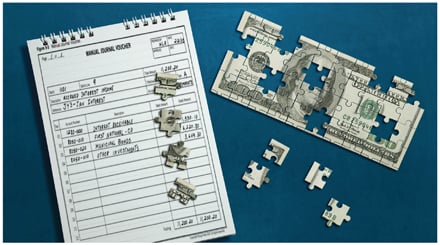 The Association of Certified Fraud Examiners (ACFE) explains that, “forensic accounting is the use of professional accounting skills in matters involving potential or actual civil litigation.” The word “forensic” is defined by Black’s Law Dictionary as “used in or suitable to courts of law or public debate.”
The Association of Certified Fraud Examiners (ACFE) explains that, “forensic accounting is the use of professional accounting skills in matters involving potential or actual civil litigation.” The word “forensic” is defined by Black’s Law Dictionary as “used in or suitable to courts of law or public debate.”
In the insurance claims world, a forensic accountant is typically engaged by an adjuster, or an attorney, to provide an understanding of an insured’s books and records, and to determine through an analysis of those books and records whether the policyholder has sustained a loss, as defined in the insurance policy.
The Forensic Accountant’s Role
Depending on the size and complexity of the policyholder’s business operation and claim, a team of adjusters and consultants may be assembled to analyze many of the issues that arise during the claims process, including (but not limited to): building and construction, production, sales and marketing, advertising, and accounting. Both the policyholder and the insurer will assemble a “team” to support their respective position. The insurer’s “team” may include a field adjuster, claims manager, underwriting department, in-house legal staff, and other experts such as engineers, salvors, outside legal resources, and forensic accountants. The policyholder’s “team” may include a public adjuster, in-house accounting department, external CPA/accounting firm, production managers, sales and marketing departments, and in-house legal department. It may also employ outside consultants, including engineers, salvors, outside legal counsel, and forensic accountants.
Recommended For You
Want to continue reading?
Become a Free PropertyCasualty360 Digital Reader
Your access to unlimited PropertyCasualty360 content isn’t changing.
Once you are an ALM digital member, you’ll receive:
- Breaking insurance news and analysis, on-site and via our newsletters and custom alerts
- Weekly Insurance Speak podcast featuring exclusive interviews with industry leaders
- Educational webcasts, white papers, and ebooks from industry thought leaders
- Critical converage of the employee benefits and financial advisory markets on our other ALM sites, BenefitsPRO and ThinkAdvisor
Already have an account? Sign In Now
© 2025 ALM Global, LLC, All Rights Reserved. Request academic re-use from www.copyright.com. All other uses, submit a request to [email protected]. For more information visit Asset & Logo Licensing.








